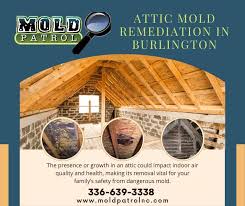Which Weather Mold Levels Are on Highest?
If you suffer from allergy to mold, you should know the time of year when the levels of mold are at their most. Mold spores can be seen at their highest levels in summers with high humidity. There are many ways to limit your contact with allergens. For instance, you could keep your windows and doors shut.
Pollen peaks in late March
As winter turns to spring, allergy sufferers could be eager to see a return to warmer temperatures. The transition in seasons could result in allergies. For some, relief will not come until the autumn months. The timing of pollen season's peak can vary from one year to the following year. This is due to changes in weather patterns and climate. A wet and cold spring, for instance can delay the start of the season for tree pollen and also overlap with the grass pollen season.
The peak in pollen levels for trees is typically in March, and they last through April. Data collection should be conducted during school hours for at least two weeks. Four weeks is more effective. That way, you'll get the most complete picture of the pollen season. Ragweed pollen levels often increase in early autumn and peak in mid-September. After that, levels slowly decrease. However, the levels of pollen can remain high until the beginning of October.
Tree pollen is the most common allergen. However grass pollen could be an issue. These symptoms can be reduced by limiting outdoor activities. Be sure to avoid exposure to pollens by closing windows in the peak time of the year. Also, be aware of insects and stings, especially If you suffer from allergies.
The mold spores are most active in summers that are humid
If you reside in an area that is humid there is a chance that mold growth will be more prominent during the summer months. For those suffering from allergies and asthma, this season can result in more severe symptoms. There are couple of easy ways to protect yourself from exposure to the high levels of indoor mold. First, you should avoid opening your windows at the night. These conditions create the perfect environment for mould to flourish.
The fungi living in decaying plant matter release mold spores that are released into the air. Mold spores can also be released into the air by fungi that live in decomposing plant matter. Although many think of mold as a fall-related issue, it can happen anytime. season, it can be an allergen in the indoor environment during the winter. The mold thrives in humid and warm regions following torrential rains.
Research shows that mold counts in Austin are especially high during the summer months during which the summer heat and rains are at their highest. Researchers from Allergy & Asthma Associates found that the air was contaminated with 27,262 mold spores per cubic meter, which is within the "High" category. This is significantly more than the normal for Austin at this time of the year.
Pollen counts affect allergy symptoms
Avoid being outside in the morning and late afternoon as pollen counts increase. This can help reduce the symptoms of allergies. It is also recommended to avoid outdoor activities such as walking in the presence of high levels of pollen. Even though pollen counts are at their peak in the early morning and late afternoon, they gradually fall by the end the day.
If you reside in an area that has high humidity and high pollen counts, use pollen masks to prevent the exposure to these allergens. Also, avoid raking leaves or hanging clothes outside. To reduce pollen levels within your home, you can use an air conditioner in the event that you do not already have one.
The amount of particles in the air is used to determine the pollen count. They are composed of trees and grasses, and weeds. People who are sensitive to pollen are affected by a high number of pollen particles. Pollen counts that are low might be only affecting allergy sufferers who are seasonal. The amount of pollen count is determined by the local pollen reporting stations. It is essential to understand the amount of pollen in your environment since it may influence the severity of allergic symptoms.
Precautions to reduce exposure to pollen and mold
Take precautions in case you're allergic to mold or pollen. For instance, it is recommended to wear a mask for pollen when you're outdoors. It is also essential to avoid activities like raking leaves or drying clothes outside. Also, keep windows closed when possible.
Allergies can be caused by mold and pollen spores. The symptoms can last up to one year. The spores, tiny fungi that reside in soil and plants are very rare. They release spores which float in the air, much like pollen. The number of mold spores in the air is higher in spring. They are at their peak in summer and are at their lowest in winter.
Tips to limit the risk of exposure to mold and pollen are the best way to protect yourself from allergic reactions. You can limit the risk of exposure by monitoring the weather, especially those who live in warm or dry climate. It is also possible to take antihistamines or wear a pollen mask when you're in the indoors.
|
Phone +13366393338
|
|
| Address: 4175 Burch Bridge Rd, Burlington, NC 27217, United States |

